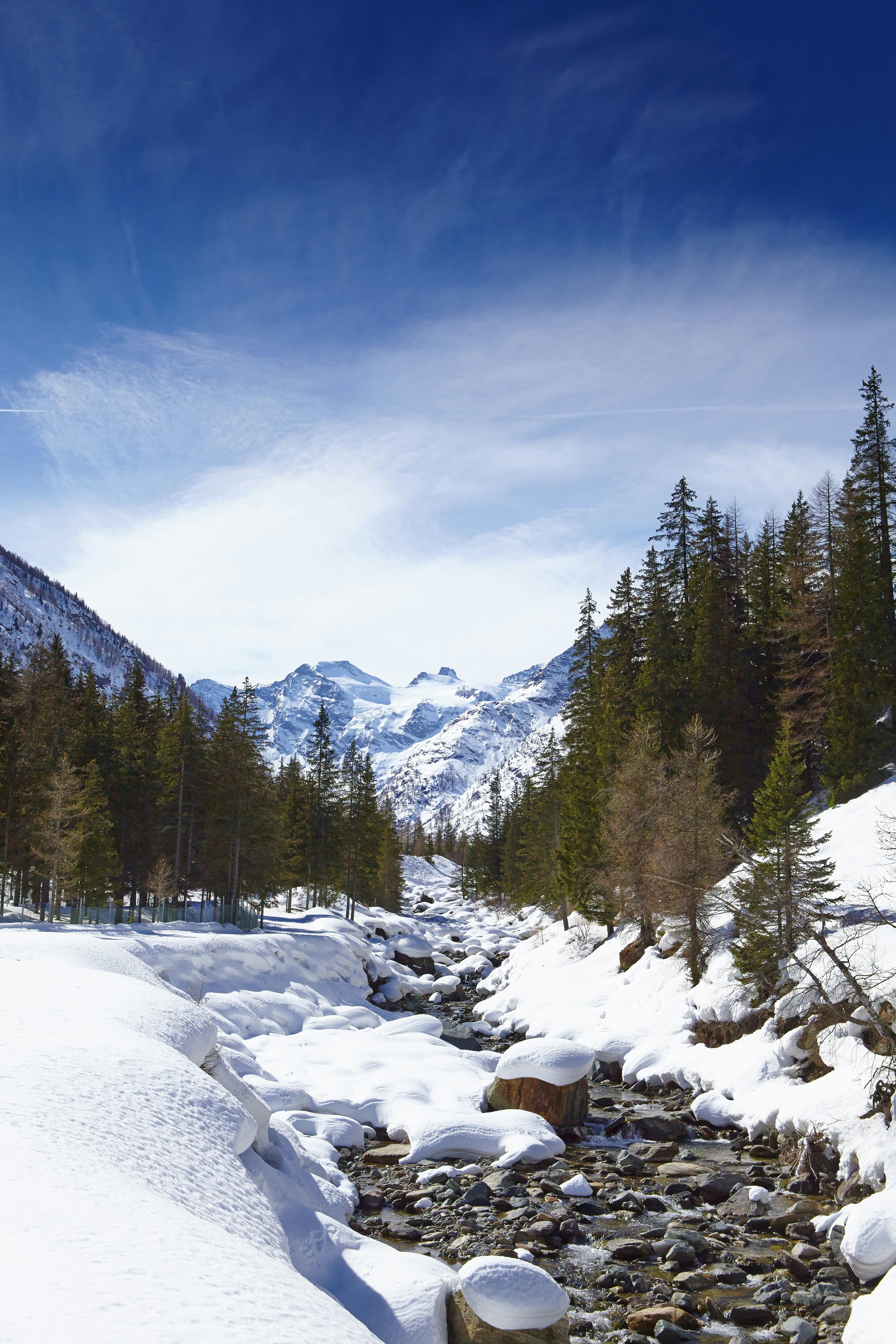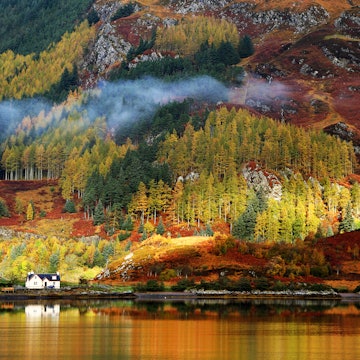

Parco Nazionale del Cilento near Campania. Giuma/Shutterstock
Italy is a country seemingly touched by the gods. As well as historic cities and artistic treasures, it possesses an incredible array of natural riches. From Alpine peaks and ancient forests to spitting volcanoes, plunging coastlines and dreamy seascapes, the country’s range of scenery is astonishing.
Many of the most inspiring areas are protected in Italy's 25 parchi nazionali (national parks). These cover the length and breadth of the country and provide wonderful outdoor sport. Hikers and cyclists can take to the parks' extensive network of sentieri (marked trails), while water lovers will enjoy splashing around in rivers, lakes and the sea. Here, 10 of our favorite Italian national parks that will allow you to uncover the country’s wilder side.

1. Parco Nazionale dell'Arcipelago di La Maddalena
Best for idyllic seascapes and messing about in boats
Encompassing seven islands and several islets off Sardinia's northeastern coast, the Parco Nazionale dell’Arcipelago di La Maddalena is renowned for its stunning seascapes and magical colors: the blues of sea and sky, the vivid pinks of its sandy beaches, the granite grays of its bizarre wind-whipped rock formations.
The park's outer isles are best explored by boat, but the main island, La Maddalena, is a fun place to hang out with its sun-baked piazzas and infectious holiday atmosphere. There's history here, too. Napoleon suffered his first defeat at La Maddalena in 1793 and Italian revolutionary Giuseppe Garibaldi lived on the Isola di Caprera until his death in 1882.
2. Parco Nazionale dello Stelvio
Best for dizzying driving and high altitude hiking
The Parco Nazionale dello Stelvio is the Alps' largest national park, covering 1346 sq km (51.7sq miles) of Trentino-Alto Adige and neighboring Lombardy, and home to one of Italy’s most celebrated roads; the Stelvio Pass was named the world's greatest driving road by the Top Gear TV program in 2008.
The park is primarily the preserve of hikers who come for the extensive network of rifugi (mountain huts) and high-altitude trails which cut through conifer woods and towering peaks, several of which exceed 3500m (11,482ft).

3. Parco Nazionale Gran Paradiso
Best for amazing alpine biodiversity
Spread across Aosta and Piedmont in Italy's far northwest, the Parco Nazionale Gran Paradiso was established in 1922 to protect the endangered ibex. This it did successfully and there are now estimated to be about 2800 specimens in the area.
The main gateway to the park, which is centered on the Gran Paradiso mountain (4061m/ 13323ft), is Cogne (1534m/5032ft), a tranquil mountain town famous for its artisanal lace. For hikers, the park's network of trails extends for 500km (310 miles) through its five valleys. For an insight into the area's amazing biodiversity, stop by the Giardino Alpino Paradisia, an Alpine botanical garden in the tiny village of Valnontey.
4. Parco Nazionale d'Abruzzo, Lazio e Molise
Best for bear watching walks
The Parco Nazionale d'Abruzzo, Lazio e Molise is one of Italy's oldest and most popular national parks. Situated about a two hour drive east of Rome, it's a world of verdant Apennine peaks, lush pastureland and thick woods populated by wolves, Marsican brown bears and chamois.
The main town is Pescasseroli, from where you can strike out in all directions. There are plenty of walking trails with routes ranging from easy family jaunts to hardcore hikes. Note that some popular trails require a small fee and others can only be accessed with a guide in August.

5. Parco Nazionale del Gargano
Best for beach going and mountaintop sightseeing
Located on the spur that juts out of northern Puglia, the Parco Nazionale del Gargano puts on a spectacular coastal display with its plunging white cliffs, marine grottoes and emerald-green Adriatic waters. Inland, there's lovely walking in the 800m-high (2624ft) Foresta Umbra and cultural interest in Monte Sant'Angelo, a remote mountain-top town where St Michael supposedly appeared to a bishop in the 5th century CE.
A signature Gargano sight are the traditional fishing platforms known as trabucchi. Many of these are still used by local fishers but some have been transformed into charming seafood restaurants.
6. Parco Nazionale dell'Aspromonte
Best for escaping crowds
In the toe of the Italian boot, Calabria's Parco Nazionale dell'Aspromonte is about as remote as it gets in Italy. Extending inland from Reggio Calabria, the untamed Aspromonte mountains are awesomely beautiful with their conifer forests and blazing spring flowers. The park's main gateway is Gambarie, where you can get information on walking and cycling routes, ranging from easy-going strolls to punishing all-day treks.

7. Parco Nazionale dei Monti Sibillini
Best for truffles and displays of wildflowers
Straddling the border between Umbria and Le Marche, the Parco Nazionale dei Monti Sibillini is an uncontaminated wilderness area that rarely gets much attention. Yet it's quite magnificent, both in winter, when its 2000m-high (6561ft) peaks are capped in snow, and in summer, when its highland meadows are cloaked in poppies and cornflowers.
In the middle ages, the Sibillini mountains were considered a realm of demons and fairies. Now, they're a magnet for hikers and outdoor enthusiasts with an expansive network of walking trails and mountain biking circuits. And for gourmets, the small town of Norcia is revered for its black truffles and dry-cured ham.
8. Parco Nazionale del Golfo di Orosei e del Gennargentu
Best for sea cruises and wild trekking
Sardinia's eastern seaboard harbors some of Italy's most dramatic coastal scenery. The best bounds the Golfo di Orosei, the seaward section of the Parco Nazionale del Golfo di Orosei e del Gennargentu. Here, a string of stunning inlets punctuate the pearly-white cliffs that extend south of Cala Gonone, the main embarkation point for coastal cruises. One of these coves, Cala Goloritzè, was recently voted the world's best beach.
The inland section of the park is equally dramatic, centered on the Supramonte plateau. Popular walking routes here include the trek to Gola Su Gorropu, a spectacular rocky gorge, and to Tiscali, a mysterious nuraghic village set in a mountain cave.

9.Parco Nazionale del Pollino
Best for whitewater rafting and tree spotting
Italy's largest national park, the Parco Nazionale del Pollino, covers 1960 sq km (756 sq miles) of mountains, flower-strewn Alpine meadows, thickly forested hillsides and river canyons in Basilicata and Calabria. Its pristine landscapes provide a habitat to wolves and wild cats as well as epic Balkan pines, known locally as “warrior trees.”
Viggianello, Terranova di Pollino and Rotonda, home of the park's official information office, all make good bases for excursions such as hiking on Monte Pollino (2248m/7375ft) and river rafting in the spectacular Raganello canyon.
10. Parco Nazionale del Cilento e Vallo di Diano e Alburni
Best for archaeological treasures and underground rafting
The Parco Nazionale del Cilento e Vallo di Diano e Alburni extends inland from Campania's southern coast to the slopes of the Apennines. Walking trails crisscross its 360 sq km (138 sq miles), taking in sandy beaches, waterfalls, meadows and forests, and culminating in the tough trek up the 1742m-high (5715ft) Monte Panormo. For a completely different perspective, you can go underground rafting in the Grotte di Pertosa-Auletta cave complex.
The park also features a number of fascinating historic sites and attractive villages. These include a trio of ancient Greek temples at Paestum and the vast Certosa di San Lorenzo di Padula.
















